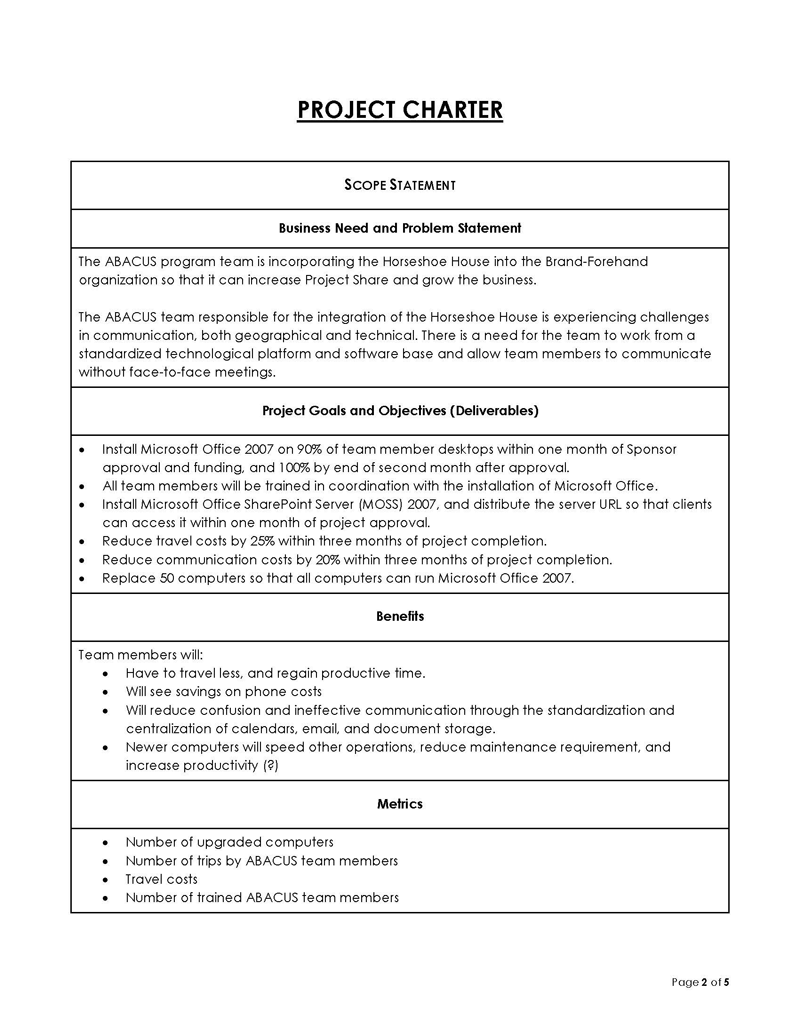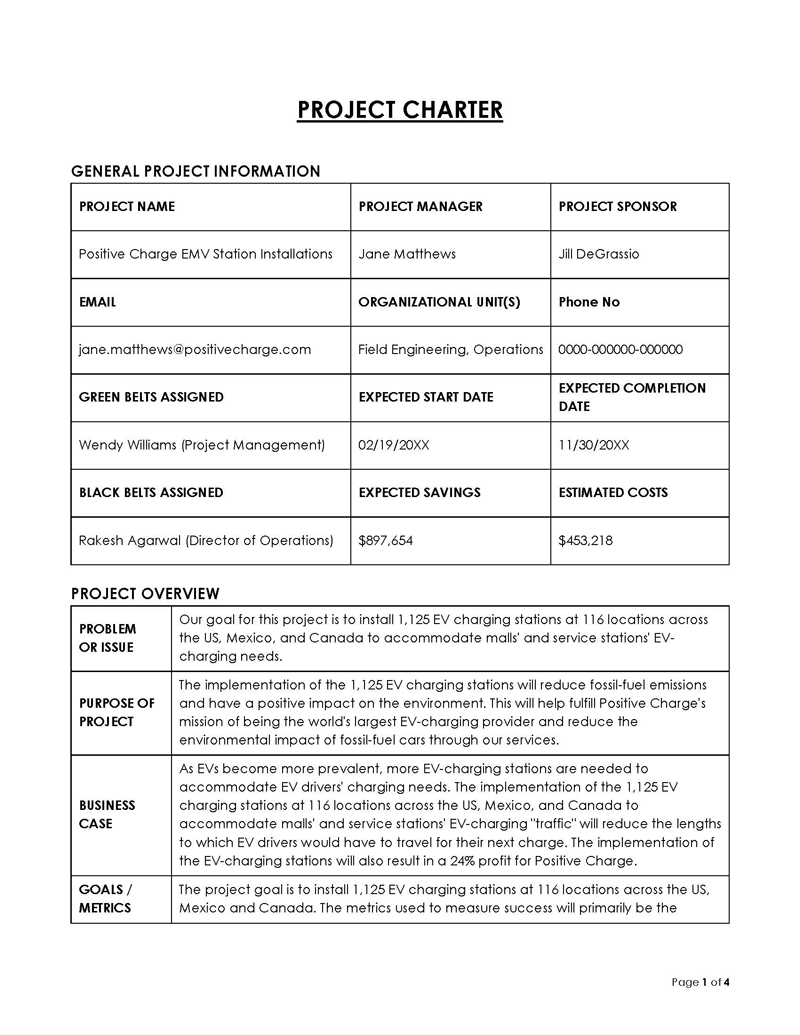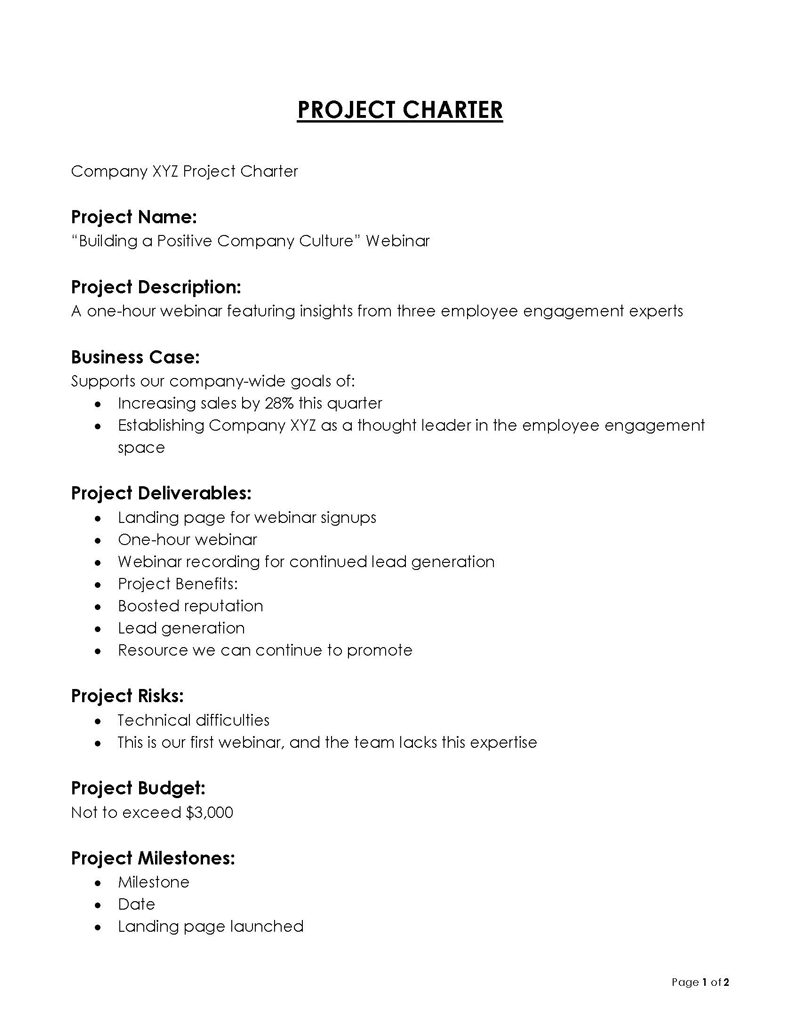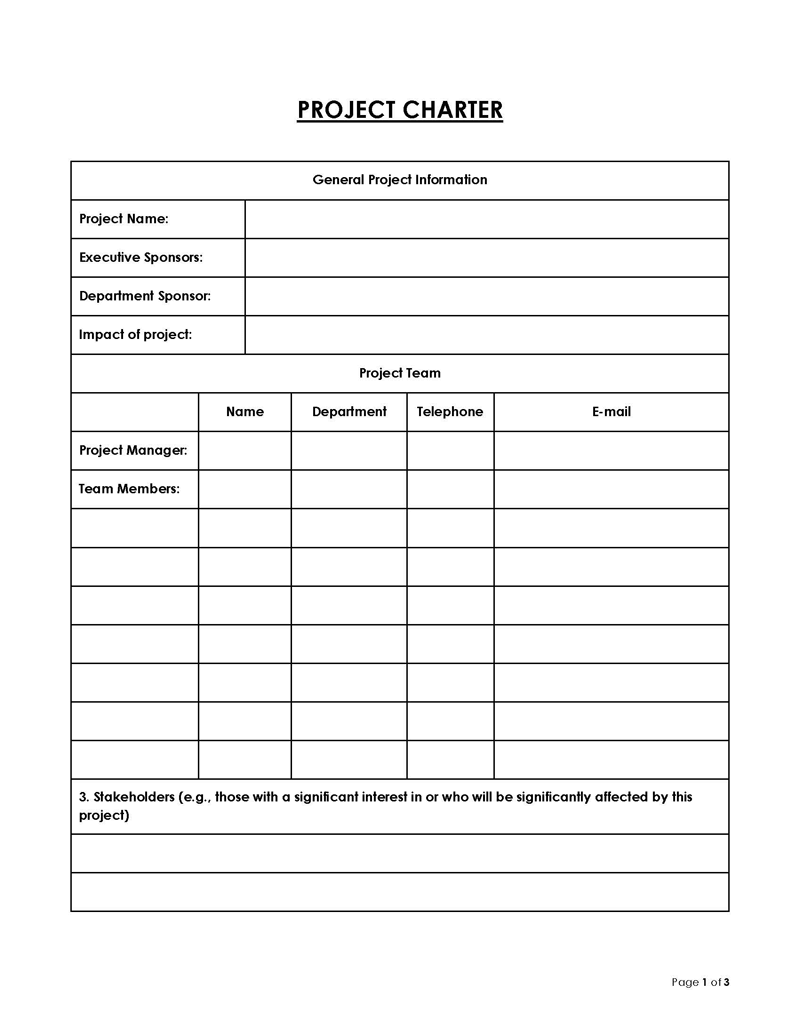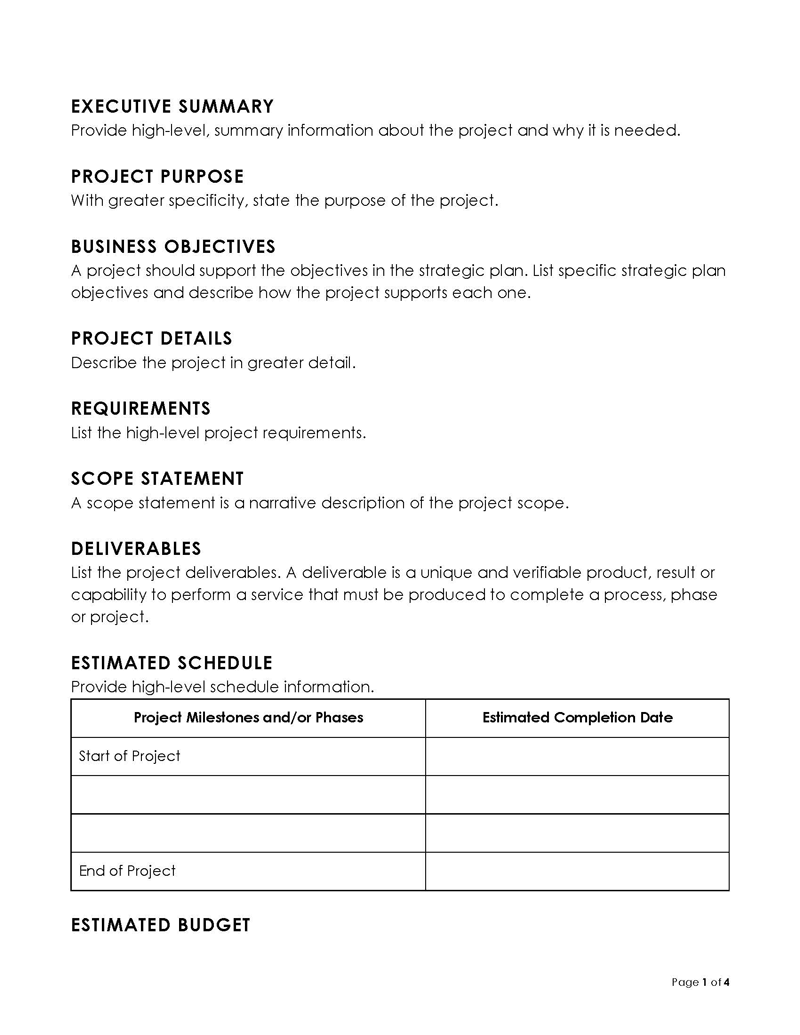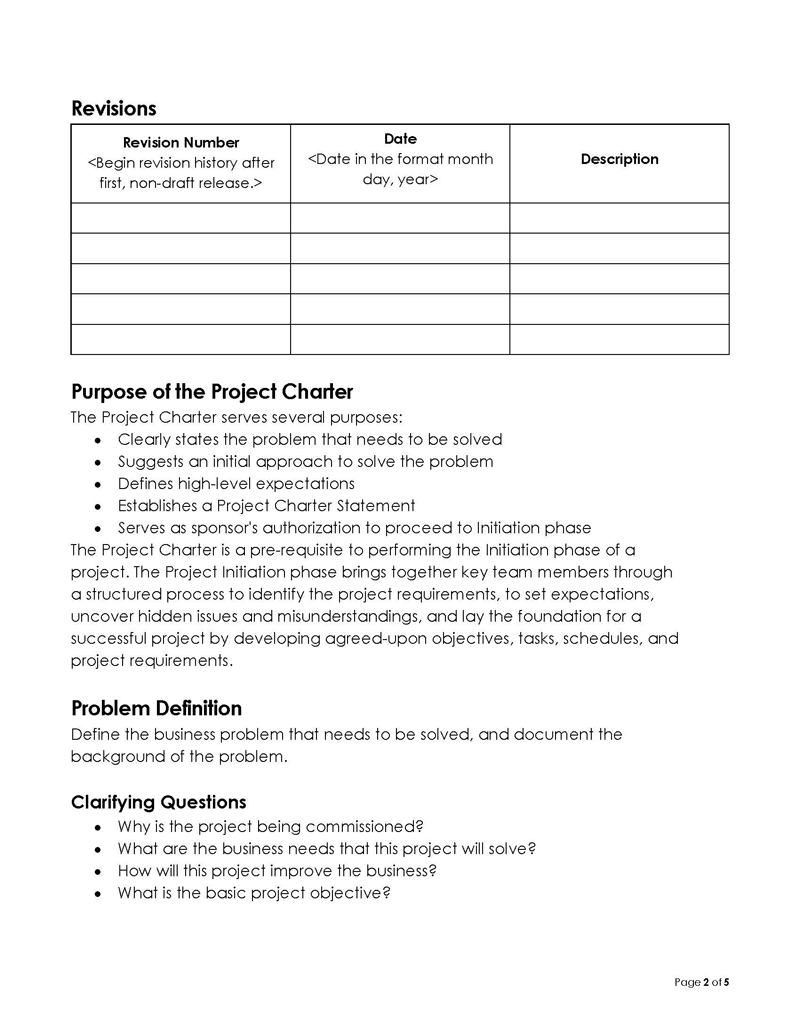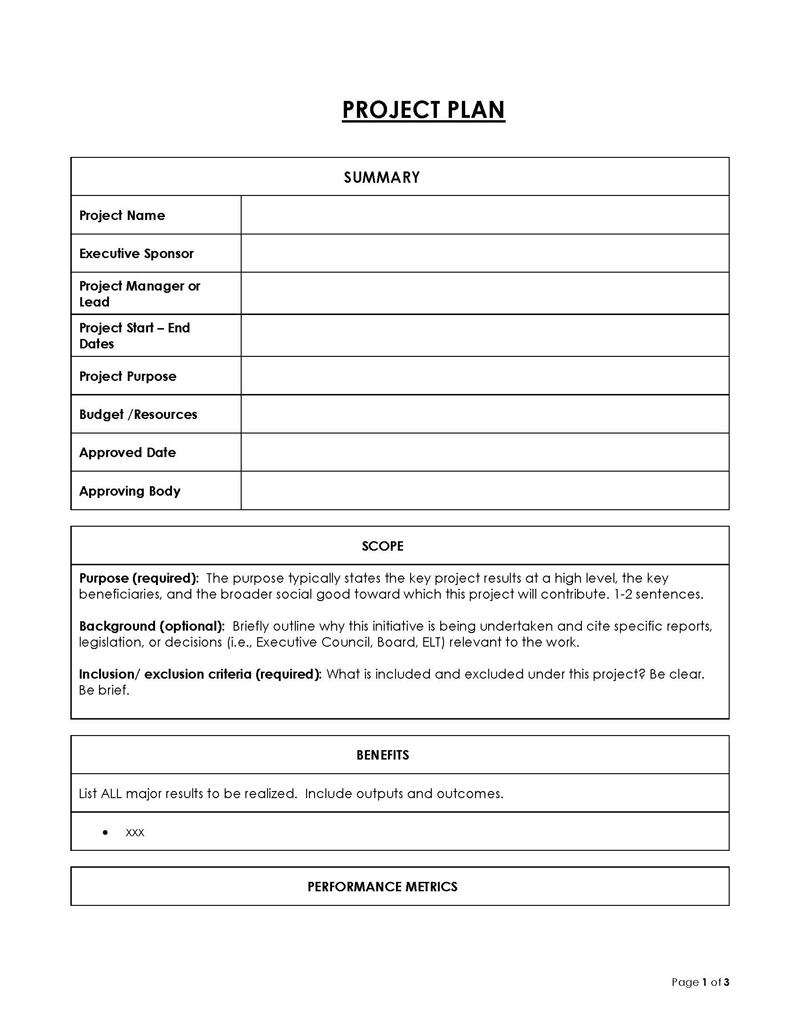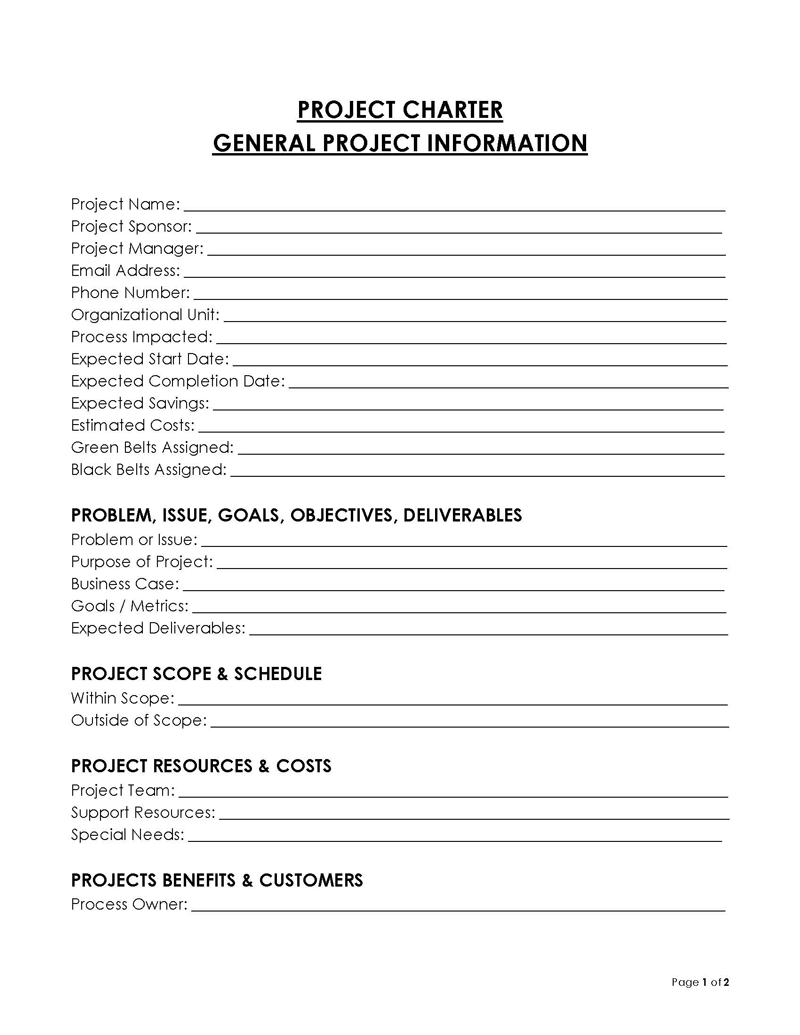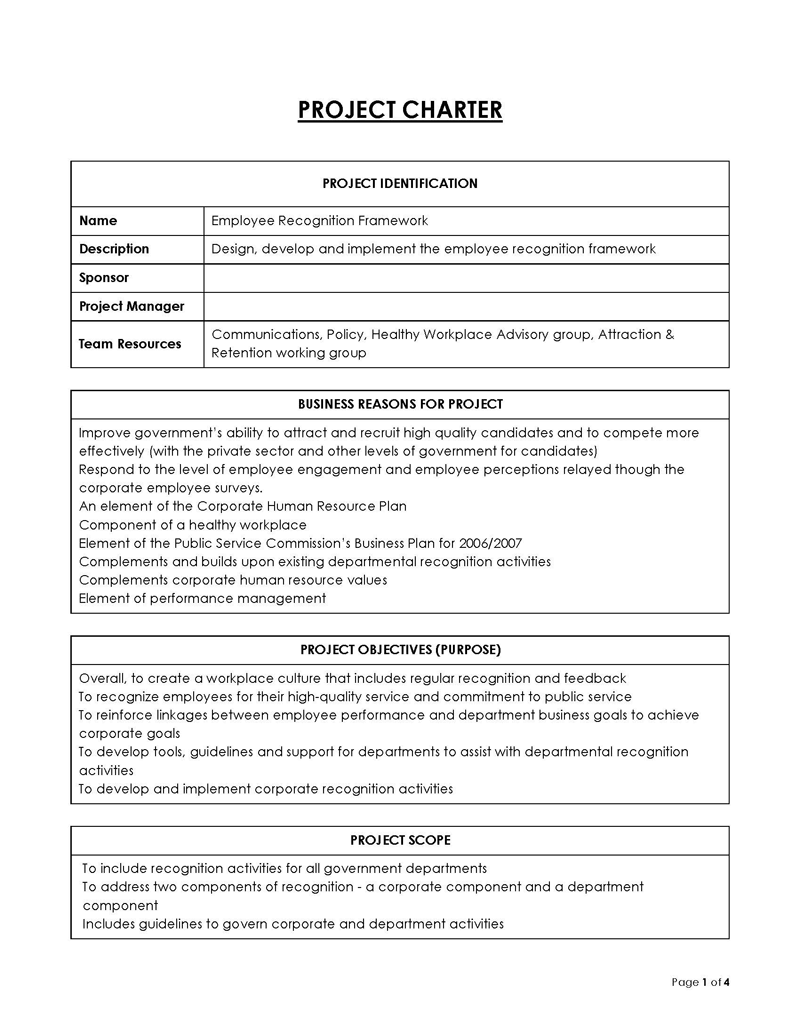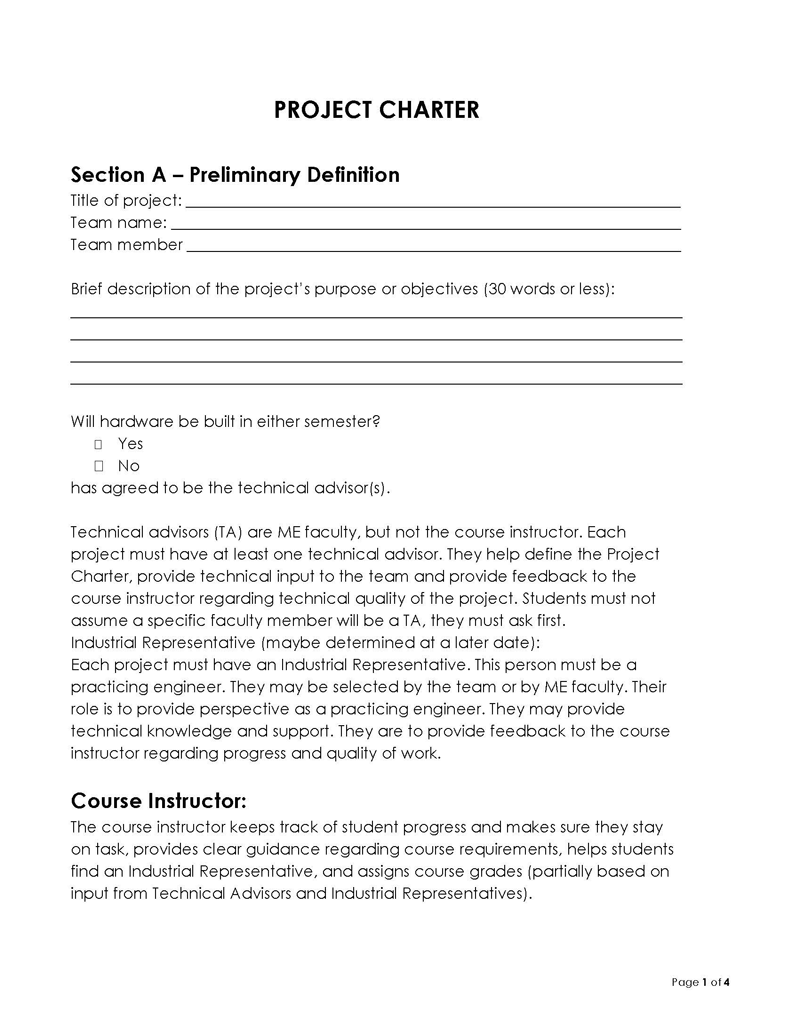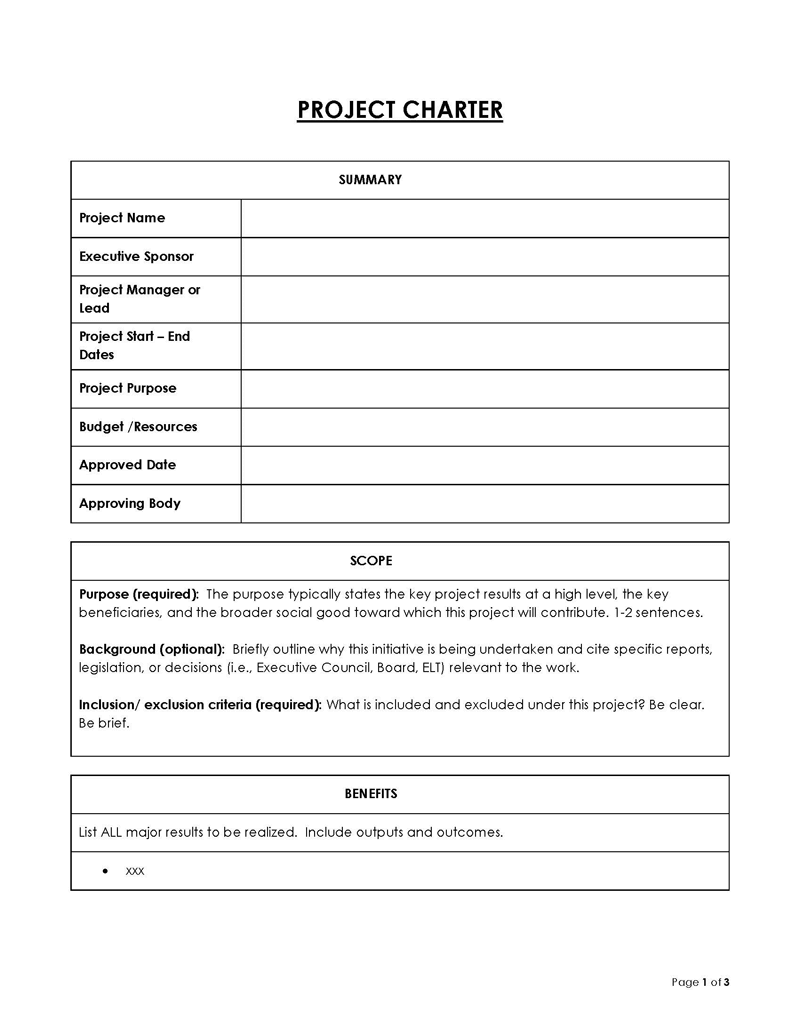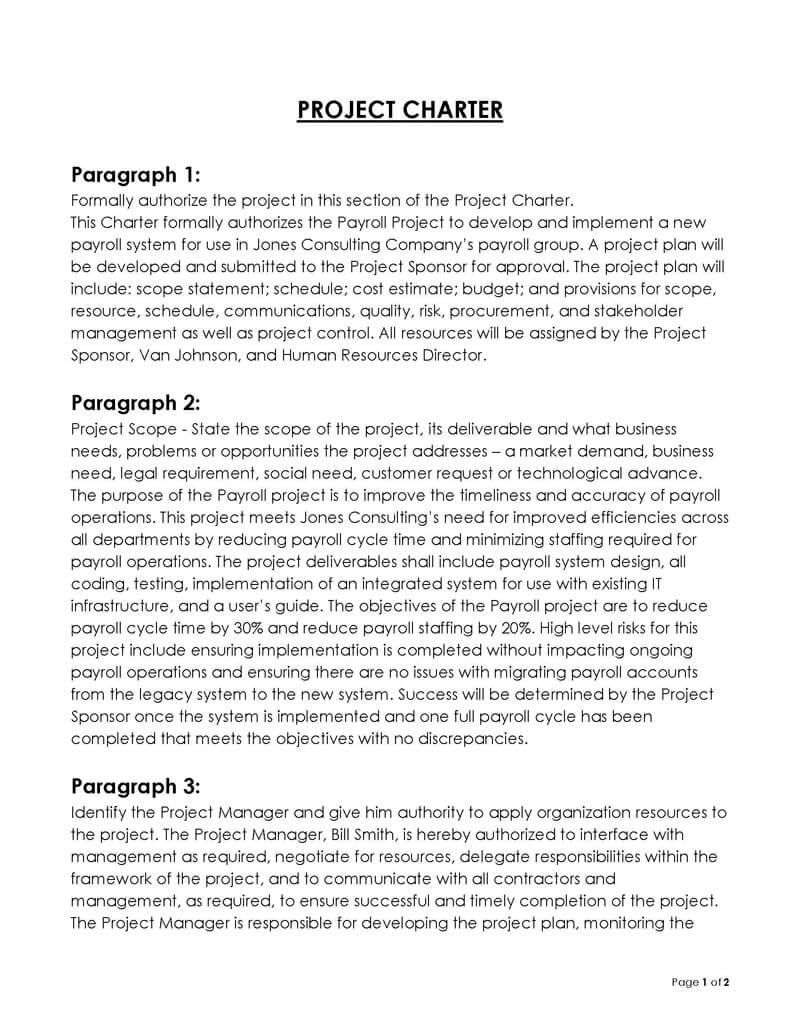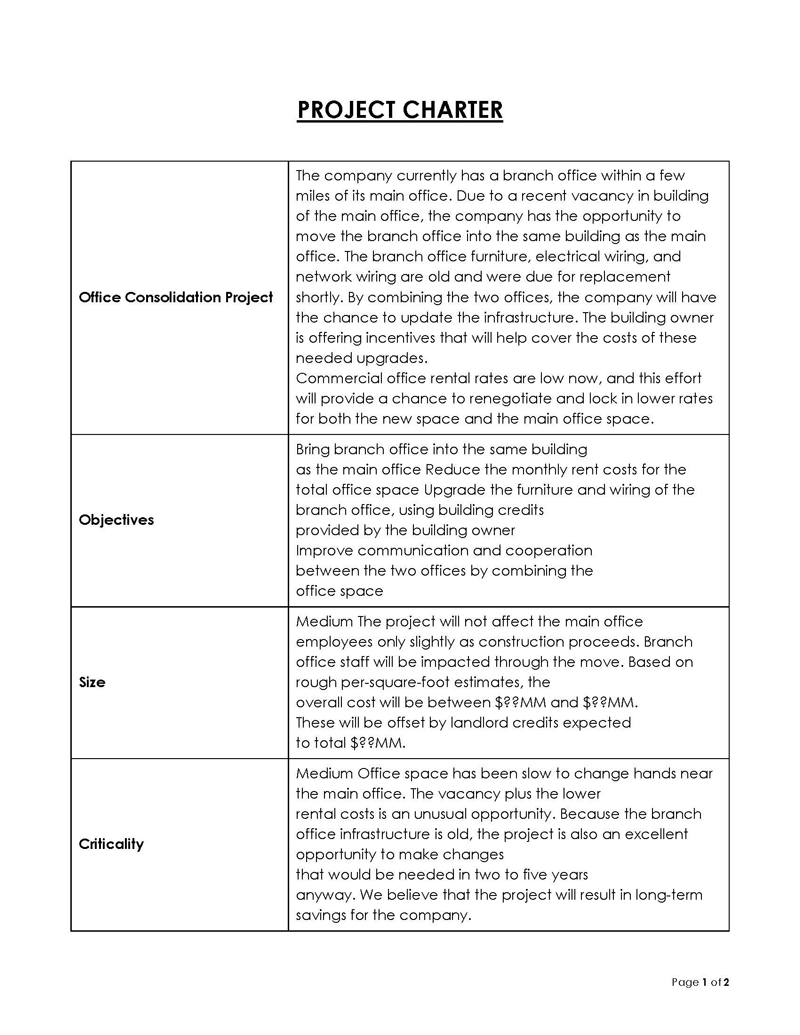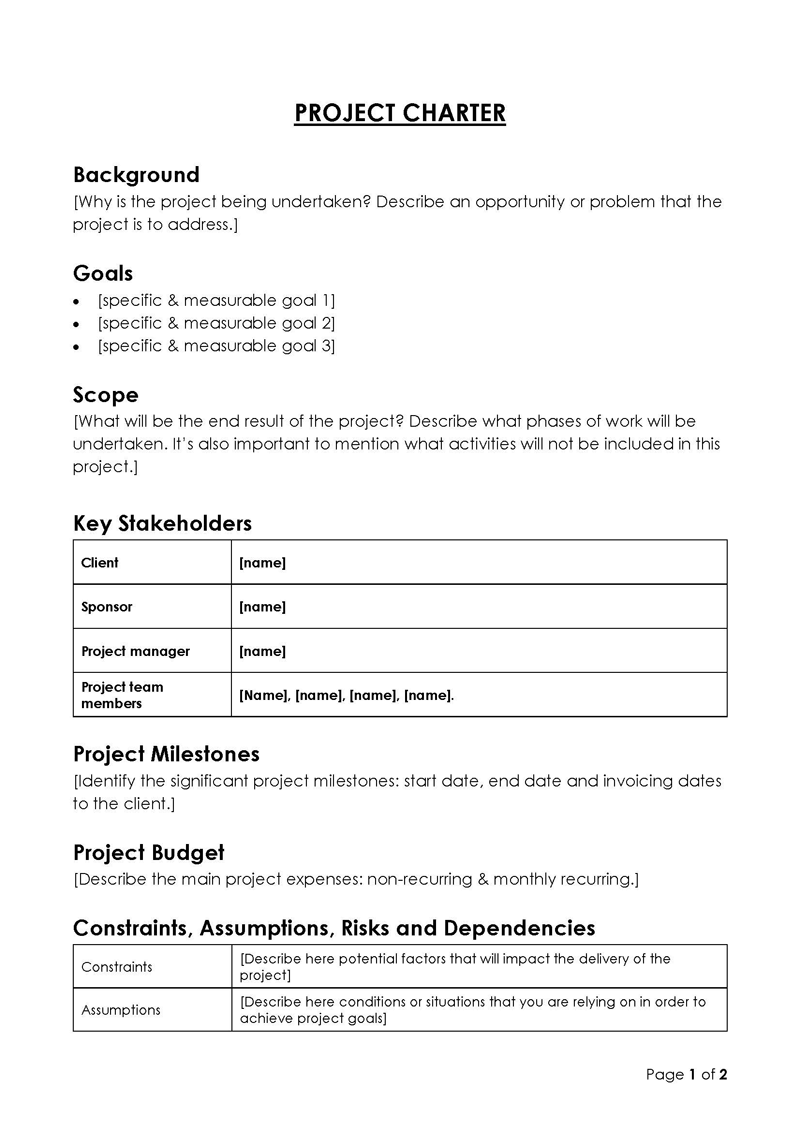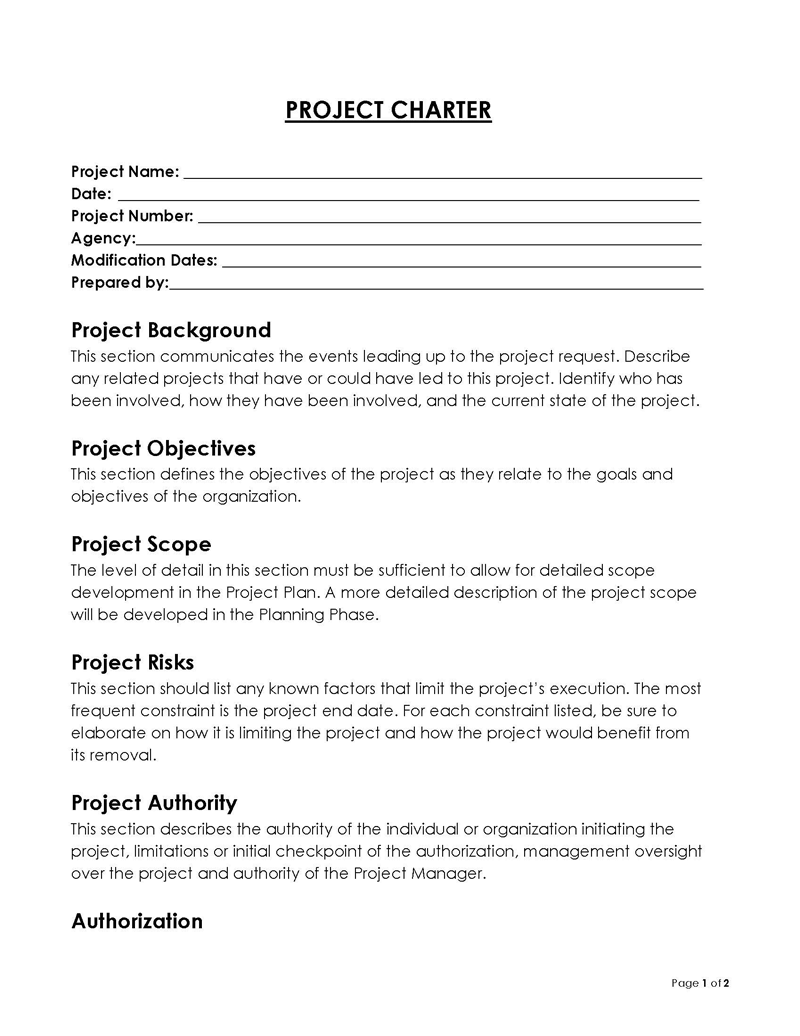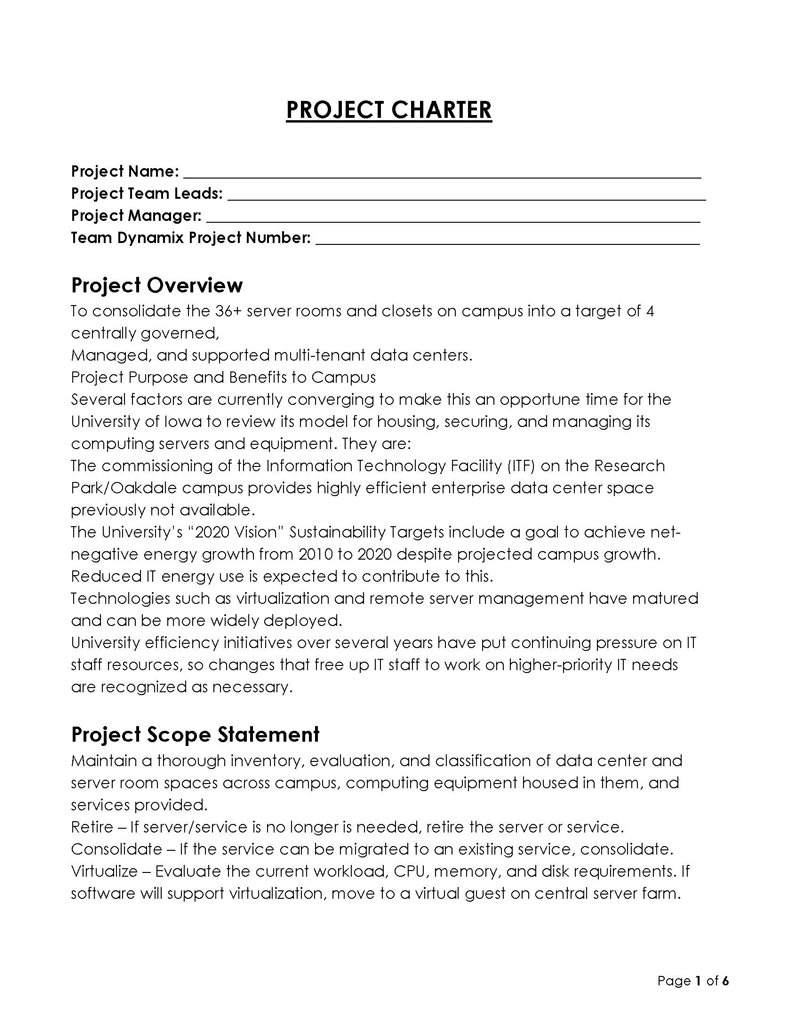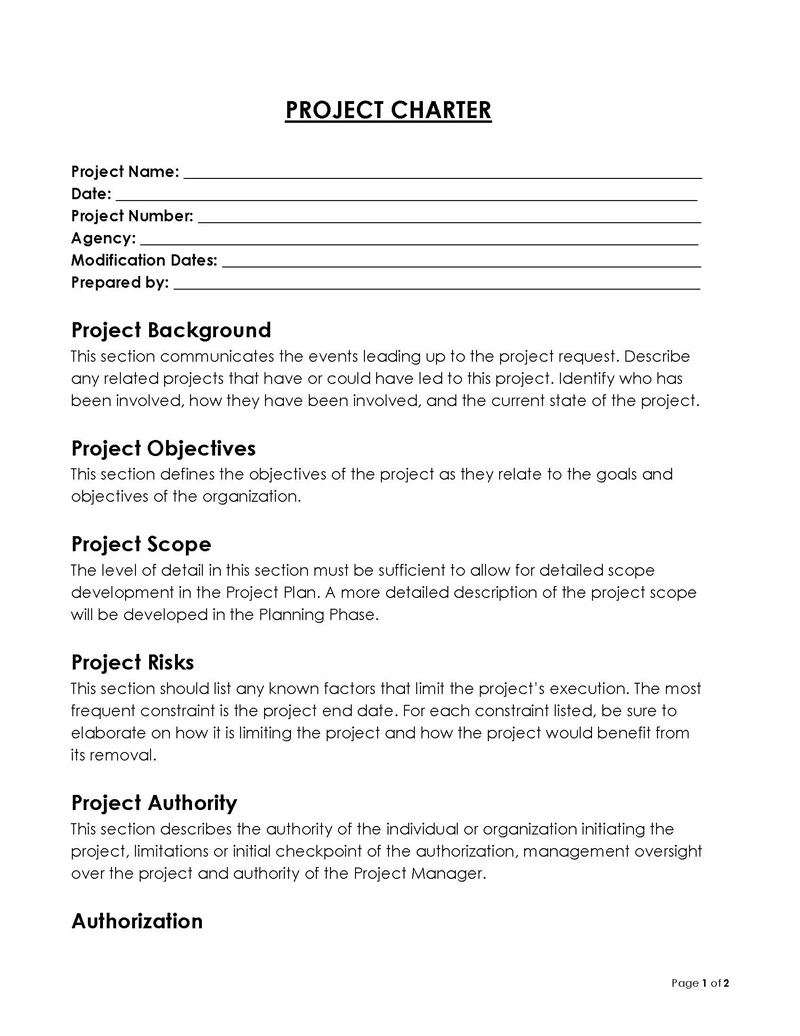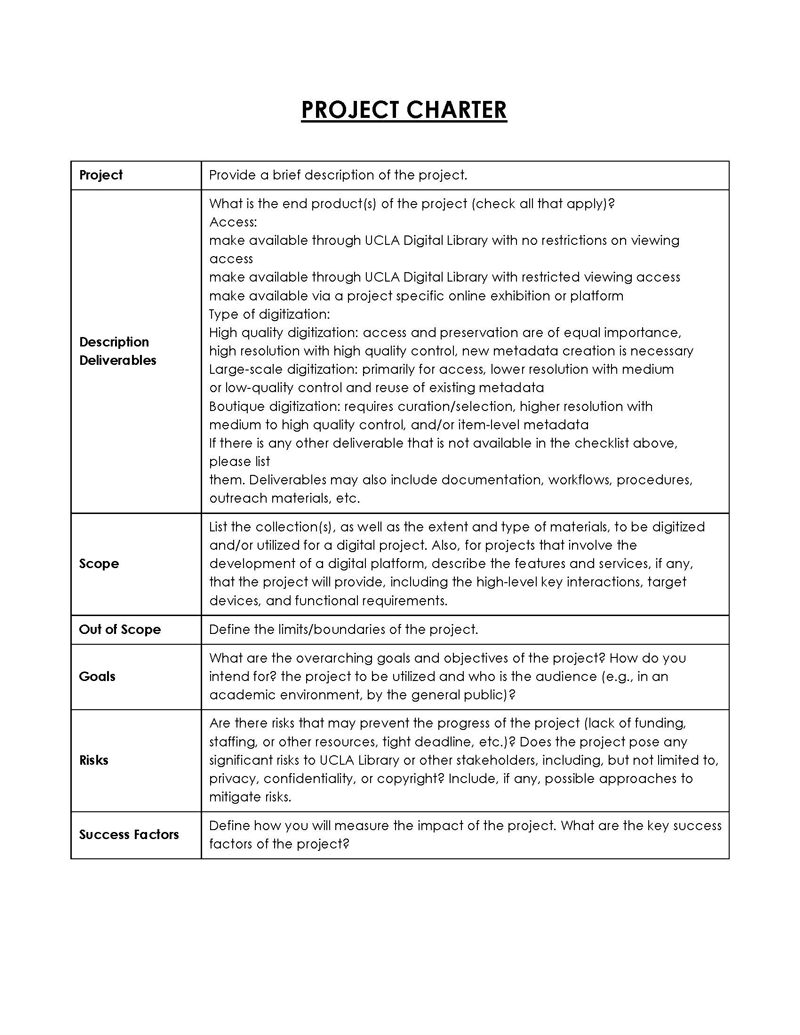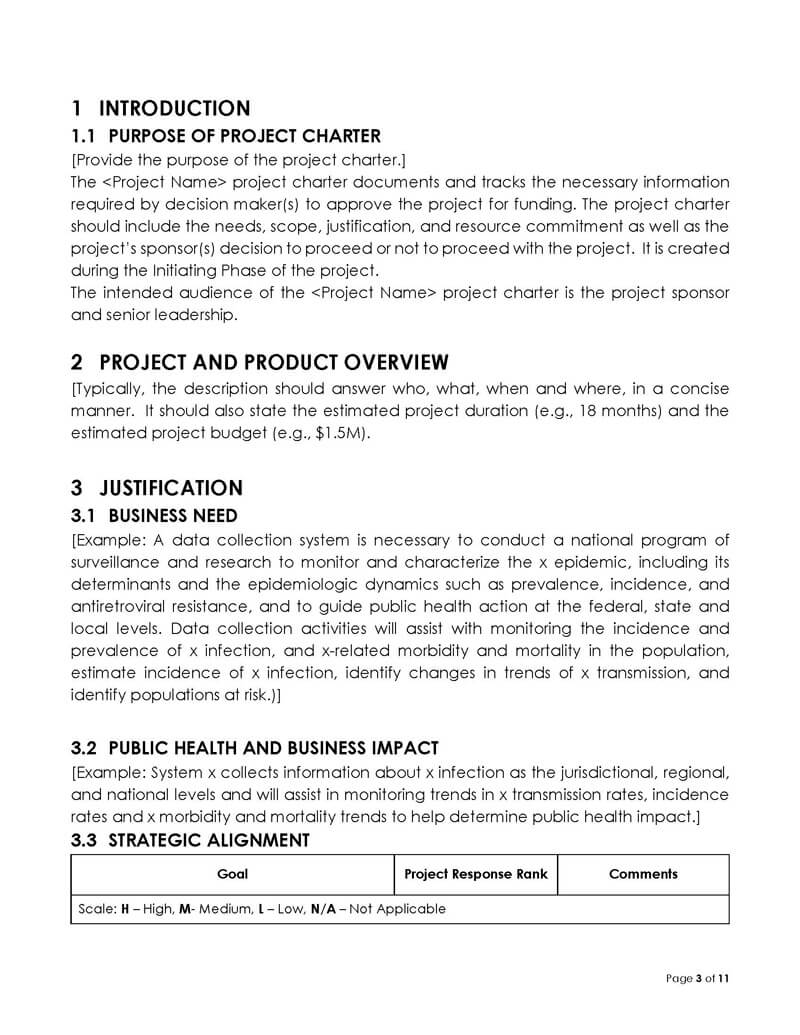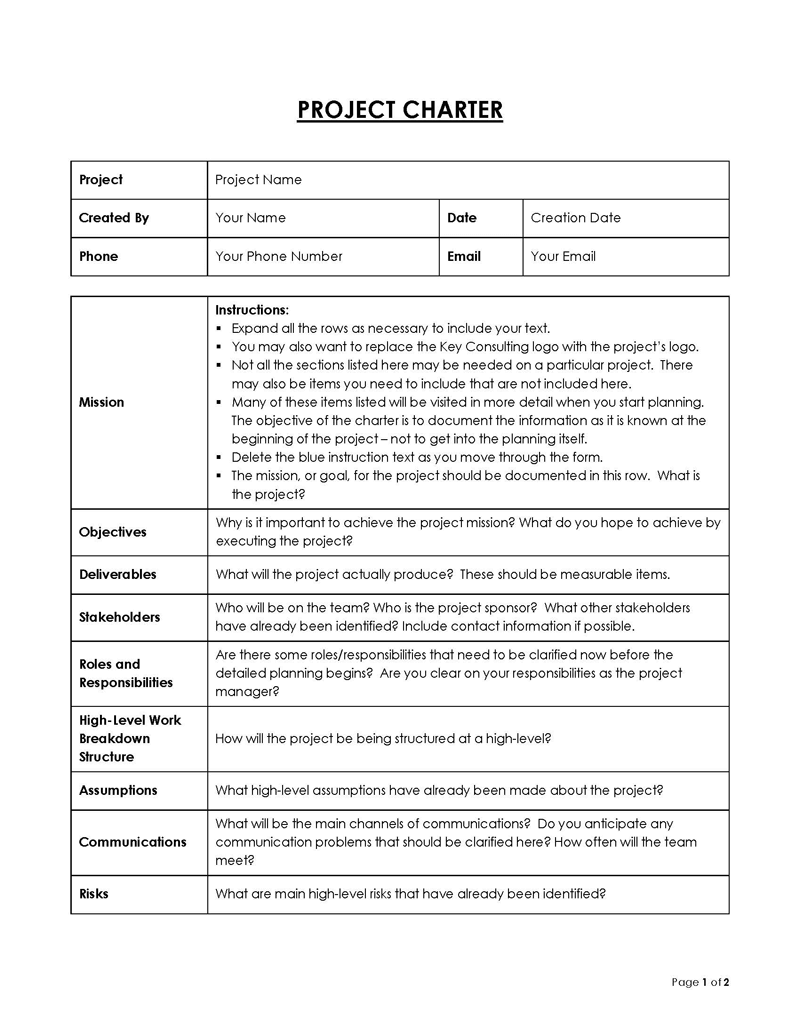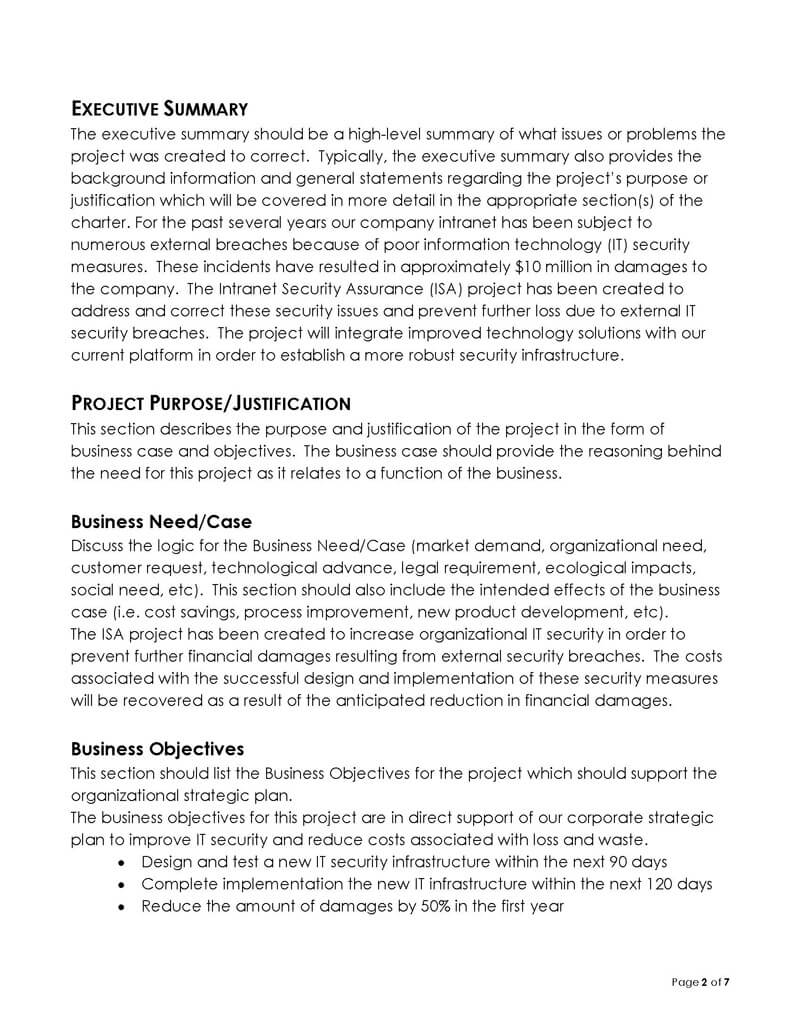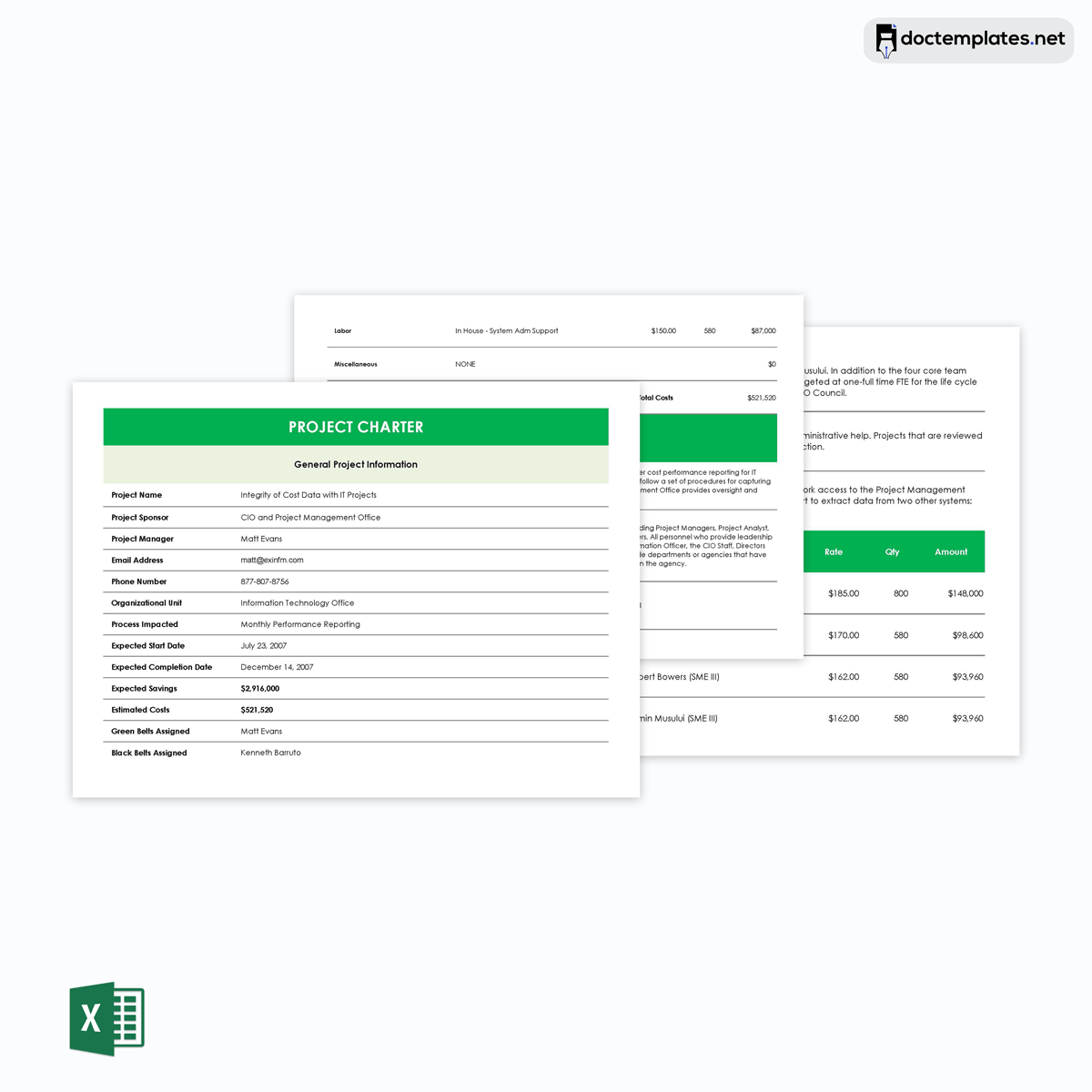A project charter is an official document that entails a detailed and clear outline of a particular project.
It acts as an elevator pitch for the project, which mainly focuses on its objectives, scope, and the parties responsible for it. It also includes the project’s reasons, limitations, risks, benefits, and general budget.
Furthermore, the document must include the project manager’s name. With this document, key stakeholders will get an overview of the timeline and goals of the project, which will encourage them to approve it. Therefore, this document must be properly prepared and submitted before other documents are made. This document formally announces the project. That means it is important to include and explain every element of the project.
A project charter is an important document that must be approved by key stakeholders before the project can be executed. Thus, you must know how to write a proper and effective document that includes all relevant information.
This article will guide you through the process of writing a project charter and the importance of having one. You will also learn the benefits of using a template when creating this document.
Project Charter Templates
Following are the free templates that you can download:
Importance of Project Charter
Apart from formally announcing your project, there are several benefits to preparing a project charter before starting it.
Here is a list of reasons why this document is important and beneficial to you:
- It is official proof that the project manager has been authorized to handle the project.
- Provides a unanimous view and understanding of the project. This means there is no confusion regarding the roles of all the team members.
- Allows the project to be started once the project charter has been approved.
- Establishes the objectives and scope of the project.
- Identifies the end goal or purpose of the project.
- Identifies and informs the key stakeholders about the project, which helps to create a proper plan.
- Enables the project manager to secure funds, resources, and a proper budget.
- It can be used as a reference point by parties or team members throughout the project’s life cycle or during meetings where it will serve as a guideline or roadmap.
- Establishes the significance of the project.
- Offers a way to save time by highlighting the project’s limitations at the beginning of the project.
- Acts as a sales document if the project manager is looking for investors.
Project Charter VS. Statement of Work
A project charter differs from a statement of work (SOW) in terms of what it is, its purpose, and what it entails. Although you will need both when managing a project, an SOW can be described as an overview document, while a project charter is an official document based on the SOW.
The purpose of an SOW is to mention why a business needs the project, while the project charter provides details of the project, and once approved, the project can begin.
Finally, while an SOW includes the project’s deliverables, assumptions, criteria, and exclusions, a project charter focuses on the 5Ws (why, who, what, when, and where) and 1H (how) of the project.
How to Create Project Charter: Step By Step Guide
Since you know that a project charter is a very important document that must be present at the initiation stage of a project, you need to know how to prepare an effective one.
Here is a step-by-step guide on how to create this document effectively:
Explain the basic details of the project
Start by indicating the project’s information, which entails its name, ID, a brief description, and names of the involved parties, such as the project manager, stakeholders, sponsors, team members, and any involved clients. You can also include the extra parties (special support) that will contribute to the project, such as security experts.
Identify goals and objectives
The next step is to establish the goals and objectives of your project. Goals are the benefits that will be gained through the project, while objectives are the step-by-step achievements that will help you reach your goals. To make effective objectives to reach your goals, use the SMART (Specific, Measurable, Attainable, Realistic, and Time-Bounded) style to prepare them.
Define team roles and responsibilities
The next step is to define the roles and responsibilities of your team members. The project charter should identify the project manager, key stakeholders, team members, and others who will contribute to the project. Identifying these parties and their roles and responsibilities will promote cooperation. Moreover, identifying all key players will make it easy for everyone to know who is responsible for different aspects of the project.
Outline the project scope
The fourth step is to outline the project scope, i.e., the project boundaries, requirements, deliverables, and/or milestones. You must include both the in-scope items and the out-of-scope ones. Furthermore, you need to specify the deliverables or key requirements. Deliverables are items you must deliver during each phase of the project.
Ensure you outline the project scope in depth by creating a scope statement.
Create a timeline
You also need to create a timeline for the project and its phases. This will show the key stakeholders when you intend to achieve the project deliverables, milestones, and stages. The stakeholders are more likely to approve your project if they have a clear estimate of the project duration and the highlights of all project milestones.
However, be careful with your timeline to avoid limiting your project schedule or prolonging it unnecessarily.
Include a budget
The project charter should also include a budget with details of all the costs. Additionally, you should specify the person in charge of managing the budget and provide details of how you will spend the funds and resources, i.e., the capital and the estimated costs for all the tasks.
The stakeholders may also need a plan (revenue and expenditure forecasts) of how you will adjust the budget in case of new requirements.
Identify all potential risks
The next step is to identify all the potential risks or threats that could arise during the project and negatively impact it. For this section, you should focus on identifying the most probable risks, creating a risk register, and developing a risk management plan for your project. The stakeholders will want to know how you intend to handle the risks. In addition, you should mention the individual who will be responsible for managing the risks.
Define requirements and success criteria
Finally, make sure that your document includes the success criteria for the project. These are the requirements that your project must attain for it to be considered successful. The three elements mostly used to define requirements and success criteria are time, cost, and scope. However, these elements differ from one project to the next. In addition, ensure that the outcome, which you consider a measure of success, is acceptable to all stakeholders in the project.
Note: Once you have created your project charter and it has been approved by the key stakeholders, ensure that they also sign the document. This ensures that the project manager has official authorization to lead the project. Also, it is important to share a copy of this document with all involved parties. Avoid sending the charter to the sponsors as a PDF document. Instead, make sure you present it physically or present it during a meeting. This allows them to ask questions and give their suggestions.
7 Tips for Effective Project Charter
There are some practices that you need to observe to ensure that you prepare an effective document. These tips are meant to guide you when writing your document.
These tips include the following:
Keep it brief and straightforward
It is advisable to avoid adding any unnecessary details and keep the document brief and straightforward, even though you must be thorough in explaining its significance to get the stakeholder’s approval. You can do this by ensuring that there is no repetition of information and using bullet points and charts.
Be explicit
Ensure that your content is as clear and explicit as possible. Most project stakeholders are busy individuals who will likely spend little time reviewing your document. A direct style and presenting all information concisely will make your document more appealing and easy to read.
Involve the sponsor
Ensure that you involve the sponsors when creating your project charter. The sponsor can support you or even create the document with you during the writing process. In addition, they can review the document before you submit it. This will increase the likelihood of the document being approved.
Write in easy-to-understand language
You must use easy-to-understand language in your document. Using complex terminology may make your document appear impressive, but it will be difficult for the stakeholders to understand it. Focus on using simpler language, avoiding jargon, and eliminating ambiguity. Make sure that your document can be read and understood by anyone.
Keep the project charter accessible
Ensure that the project charter is always accessible in case your team members or project sponsors want to consult it. Making it accessible will keep the team organized and remind everyone of their roles. You can create a workspace that will allow you to arrange all your project documents, with your project charter being the easiest to access.
Consider insights from the team
Instead of preparing a charter on your own, you should consider involving your team and getting their insights. With input from your team, you can quickly identify the project’s goals, objectives, risks, milestones, and many other components. Also, you will work faster and still prepare an effective and accurate document to convince the key stakeholders.
Use a template
Finally, you can use a template instead of creating the document entirely by yourself. You can find these project charter templates on this website. They will make your work easier and significantly save you time. The benefit of using a template is that you can easily add your project information without forgetting any important elements.
Conclusion
A project charter is an essential document that should be prepared before a project is initiated. Once it has been approved, the project manager can begin. Because of its importance, knowing how to prepare an effective project charter is necessary. A strong document will also provide you with the framework needed for a project’s successful execution. This document should always be accessible to everyone so that everyone involved in the project can consult it. You can either create it yourself or use a template to help you save time and effort.
